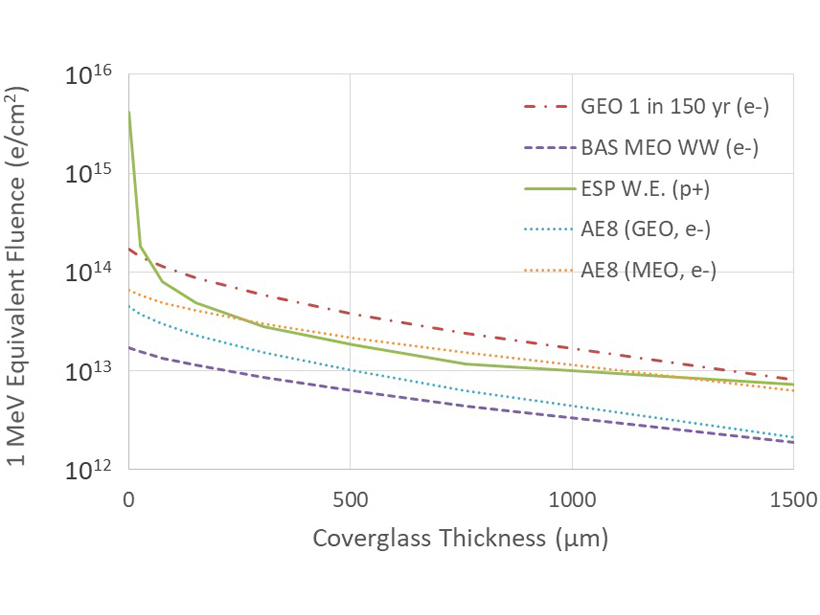Source: Space Weather
Energetic electrons and protons cause damage to solar cells by reducing charge carrier lifetimes within semi-conductor layers. Much engineering effort has focused on stopping the more massive protons accelerated during solar storms. Such storms develop most frequently during with a few years of solar cycle maximum. The decline of solar cycle 23 (2003–2005) saw an up-tick in electrons accelerated to relativistic energies in Earth’s Van Allen radiation belts. The less massive electrons penetrate much deeper into spacecraft electronics creating Displacement Damage Dose (DDD) that reduces a solar cell’s ability to power its spacecraft. Radiation belt storms tend to occur well after solar maximum.
Hands et al. [2018] reconstructed a 30-year data set of energetic electron behavior for the Galileo Global Navigation Satellite System orbital environment. Their data set extends well beyond the lifetime of any given satellite. They report that for the estimated one-in-150-yr, worst-case event at geosynchronous orbit the extreme space weather threat to spacecraft in from cumulative damage effects from trapped electrons rather than from solar protons. This paper suggests that economic analysis of extreme space weather effects on the global satellite fleet should be updated to reflect the possible damage by radiation belt electron storms.
Citation: Hands, A. D. P., Ryden, K. A., Meredith, N. P., Glauert, S. A., & Horne, R. B. [2018]. Radiation effects on satellites during extreme space weather events. Space Weather, 16. https://doi.org/10.1029/2018SW001913
—Delores Knipp, Editor-in-Chief, Space Weather
Text © 2018. The authors. CC BY-NC-ND 3.0
Except where otherwise noted, images are subject to copyright. Any reuse without express permission from the copyright owner is prohibited.

